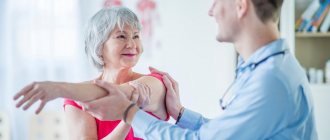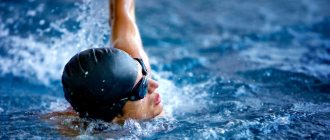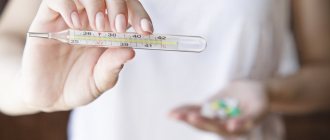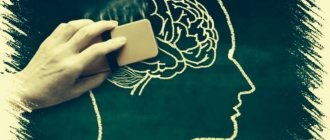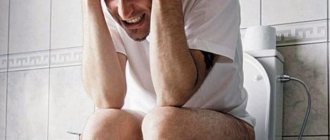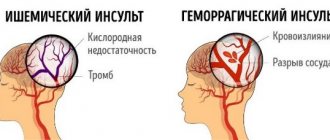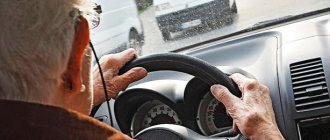Rehabilitation after a stroke at home in Krasnodar and the Krasnodar region will help a person restore all lost skills. But it is necessary that the entire process be carried out under the supervision of qualified specialists using a personal approach. The brain is an extremely important human organ, so in case of any disease it is necessary to take timely measures. Otherwise, this will lead to risks of deterioration in the performance of the entire body.
During the development of the disease, any part of the brain or several at once is affected. And this leads to loss of speech, cognitive, motor functions or a number of others.
A well-designed and compiled rehabilitation program at home helps to cope with all the negative consequences and restore lost functions. It is necessary to be in constant contact with specialists, strictly follow their recommendations, take care of the patient, and provide all possible support and assistance.
And also be sure to evaluate all possible risks and understand whether it is possible to opt for rehabilitation in an inpatient boarding house under round-the-clock supervision of doctors. In Krasnodar and the Krasnodar Territory, such a reliable option is the private boarding house for the elderly “Harmony”.
Possible negative consequences of cerebrovascular accident
Apoplexy is one of the most severe and dangerous types of cerebrovascular insufficiency, in which the optimal amount of blood ceases to flow into the human brain.
As a result, oxygen ceases to flow into organs and systems, which leads to oxygen starvation and various neurological disorders. The initial sign of the onset of the disease is thrombosis, rupture of blood vessels due to vascular insufficiency. The most common negative consequences of such an apoplexy are lack of oxygen, death of neuronal brain cells, and internal hemorrhage.
The attack itself lasts a day or more. And during its onset, the patient must be urgently taken to the hospital, where he will be under the supervision of a team of qualified doctors. It is the timely call of an ambulance, the help of doctors and subsequent rehabilitation that is extremely necessary, since the process of death of brain cells is extremely dangerous and continues even after the main symptoms of pain have already passed.
What is the danger of having an attack?
- Partial or complete loss of physical activity, as the command to the limbs is given by the affected brain.
- Mental disorder, loss of speech and cognitive abilities.
- Memory loss, temporary or complete amnesia.
- Impaired coordination of movements and fine motor skills.
- Complete or partial loss of vision.
- decreased immunity, infectious diseases, etc.
In each specific case, such dangerous consequences manifest themselves to a more or less pronounced degree, while some are absent. This depends on focal or complete brain damage, which directly affects the possibility and duration of recovery.
Exercises for the torso
To restore good coordination of movements, it is necessary to use special physical exercises after a stroke, which should be performed every day. A set of the most effective exercises for the torso:
- Extend and connect your arms together, then perform forward inclined movements with your body. In the first few days, it is recommended to perform this exercise while sitting, after which - standing. They must be repeated 15 to 20 times.
- Pull your knees towards your chest while lying on the floor. Then lower one leg to the floor, holding the other with your hands. The exercise significantly works the abdominal muscle tissue.
- From a sitting position, place your hands on your belt, and then perform inclined movements of the body in different directions. When you feel better, it is recommended to perform the exercise while standing.
To normalize the muscle fibers in the neck, the patient needs to make short movements of the head to the right and left. To restore the fingers, they should be bent and unbent 15-20 times.
How long does rehabilitation after a stroke last at home in Krasnodar?
The exact recovery time varies from person to person and depends on the following factors:
- State of human health, existing diseases, characteristics of the body.
- The patient's age. With the advent of old age, it becomes much more difficult to restore the body.
- The intensity of the symptoms, the affected areas of the brain and what kind of attack the patient had.
On average, according to statistics, recovery from a primary stroke takes from 3 months to six months, depending on the complexity of the situation. In more complex cases, therapy using specialized methods and technologies can last up to 8 months.
After a secondary attack, the patient recovers for a whole year, the likelihood of a full return of all lost functions is reduced, some of them will remain with the patient. And with the third and subsequent strokes, the likelihood of falling into a coma or death increases significantly.
Looking at the world
According to statistics, 20% of patients have visual field impairment. When they are identified, complex therapy must be started. It includes:
- moisturizing the mucous membrane with drops or gels;
- drug treatment - drugs are selected by the doctor taking into account the complexity of the problem, the general condition of the old man, and other prescribed medications;
- oculomotor gymnastics - there are several techniques, so you should get qualified advice from an ophthalmologist. However, the main goal of all techniques is the need to achieve a decrease in intraocular pressure and relaxation of the eyes. The patient may be offered tasks to draw images and objects in the air, focus his gaze on certain objects (located at different distances), etc. If the state of health does not allow performing tasks independently, then help can be provided by loved ones or hospital staff;
- diet – foods rich in vitamin A are introduced into the diet. Regularly eat carrots, fish, egg yolks, pumpkin, and yellow peppers. Blueberries and grapes are also useful.
Additionally, other methods, including surgery, may be suggested.
Special computer programs have been developed to restore vision. Classes last up to 20 minutes. They are recommended to be carried out daily for several months.
When to start recovery after ischemic stroke injury
With such an illness, the patient must immediately go to the hospital to receive professional emergency care, followed by reliable treatment and elimination of the root causes of its manifestation.
The average hospital stay is 2-3 weeks if there are no complications. This period is enough to collect all the tests, identify the characteristics of the situation and drug treatment. But it is recommended to start professional rehabilitation from the first day after an apoplexy strike while still in the hospital under the supervision of doctors . This way you will restore lost speech, memory, etc. as reliably as possible.
Remember, the faster you begin to normalize your condition, the higher the likelihood of obtaining the most favorable prognosis for recovery, and the risk of relapse of an attack will also be reduced. It also allows you to more reliably and safely cope with various secondary diseases that appear after an attack.
Main types of stroke
First of all, understand what type of apoplexy the patient has and the further process of recovery depends on this. Thus, the ischemic variant has a more superficial nature of vascular damage and the rehabilitation period will be shorter. But with the hemorrhagic type, the rehabilitation period is longer, but the negative consequences are the least pronounced.
To do this, it is important to identify the main stages of a stroke attack:
- The most acute is the beginning of the blow itself with damage to the nerve endings. Lasts from several hours to a day.
- Acute - occurs in the first minutes after a disruption of nerve connections has already occurred with a pronounced manifestation of dangerous symptoms.
- Subacute. At this stage, specialists have already helped to cope with the attack, prevented the development of death, and stabilized the person’s condition. On average, this stage lasts 3 days and requires mandatory round-the-clock supervision by doctors, reliable care, and following all the prescriptions of specialists to prevent the recurrence of the stroke.
Then a rehabilitation program is carried out, which is divided into early and late . Early occurs within the first few weeks of the client's hospital stay. And late rehabilitation after a stroke at home in Krasnodar is carried out after discharge .
It is important to analyze in more detail the features of rehabilitation in specific areas and identify their features.
Leg exercises
Leg exercises after a stroke are a particularly important process through which the patient can restore the functions of the musculoskeletal system and return to normal life. A set of workouts for developing the lower extremities of the body:
- From a sitting position, lean back on the pillow, holding the bed with both hands, while stretching your legs in front of you. After this, it is necessary to begin smooth deflections of the torso while simultaneously moving the head back. Next, the patient makes a deep entrance for 5 seconds, after which he returns to the starting position. The number of these exercises for stroke is from 6 to 8 times.
- Sit on a comfortable surface and straighten your legs, then slowly throw your arms back, throwing your head back and straightening your back. Next move your shoulder blades and stay in this position for a few seconds. Repeat the exercise 4 to 6 times.
- Bend your legs at the knee joints and lie on the hard floor, then lift them one by one to the chest, holding this position for 10-15 seconds. If necessary, you can help with your hands. This set of exercises after a stroke helps restore the functionality of the hip joints.
- Take a comfortable position on your side while bending your knees. Try to spread your knees to the sides as much as possible, holding this position for 10 seconds. It is important that the feet do not come off each other.
In addition to the exercises described above after a stroke, restoring healthy leg function is possible with simpler steps. Thus, the patient is recommended to alternately swing his limbs 3-4 times a day and rise on his toes, holding onto the wall.
Restoration of motor functions
Often, after suffering an apoplexy, the patient loses his previous motor activity in full or in part. For example, hand motor skills suffer, movement coordination is impaired, and limbs do not move. Doctors also strongly recommend that you strictly adhere to bed rest for the first time and not get up, even if you have the strength to do so. The best option would be to sit on a special bed or use pillows to warm up your arms and legs.
It is useful to use therapeutic massage , which can only be performed by a qualified master. It can be general and complex in nature or affect a specific muscle group. It is also important to develop muscles, which will be an excellent barrier to the appearance of spasms and pain. If the client is unable to move parts of the body, then a passive version of gymnastics is used.
It is important to understand that physical therapy, massage sessions and feasible physical activity alone will not be enough to restore lost motor activity. It is important, along with them, to use professional equipment. For example, by applying current pulses, it is possible to stimulate the affected areas and bring them back into active tone.
Baths and applications are also used as additional measures to improve blood circulation. The doctor may prescribe medications to relax muscles, eliminate pain and spasms. Pay special attention to the person’s face and facial expressions. In case of pinched nerves or paralysis, facial expressions change noticeably. You can cope with its restoration with the help of simple exercises. You should do gymnastics for your eyes and mouth, make a wide smile, pronounce various sounds, squint your eyes tightly and relax your eyelids.
Hand exercises
Before developing hands after a stroke, the patient needs to warm them up using a heated towel or a regular burner. The main set of exercises for paralyzed limbs:
- Close your fingers, then raise them above your head for as long as possible and move them to the sides. It is important that the elbows of the raised arms are straight. This exercise for the arms after a stroke should be performed until slight fatigue occurs.
- From a lying position, place the limbs along the body. Then you need to bend your right arm at the elbow joint and slowly lower it. Repeat the action with your left limb. This exercise after a stroke should be performed with each hand 10 times. If the patient is able to do more, there is no need to stop him.
- Pour pencils, pens, buttons and other small objects of different shapes into a deep bowl. The main task is to alternately transfer objects from a bowl to another container. This exercise helps improve motor skills.
Before you restore your arms after a stroke, you need to remember about muscle hypertonicity, which is the main problem when developing limbs. Due to prolonged lack of motor function, muscle tissue loses elasticity and shortens, causing movement to become constrained.
The process of hand recovery after a stroke can slow down when the patient does not perform any actions using the paralyzed limb, loading only the healthy one. It is especially important to ensure that, in addition to complex exercises, the patient strains his non-functioning arm at home.
Before you work out your left arm after a stroke, you need to consult with your doctor, who can choose the most effective set of exercises.
Restoring vision, eyes after stroke
Often, apoplexy affects individual vessels that supply the eyeball with everything necessary. This may lead to the following:
- Complete or partial loss of vision.
- Inability to open and close the eyelid.
- Problems moving the eyes up and down and to the sides.
- The appearance of presbyopia is a change in focus and the pensioner cannot distinguish small objects at a short distance.
A professional and experienced ophthalmologist will help you cope with such deviations. It is important to start treatment at the initial stages, carry out complex therapeutic exercises for the eyes, and take medications to relax muscles . In some cases, surgical intervention is necessary to fully or partially restore visual acuity.
Types of simulators
Therapeutic gymnastics after a stroke involves the use of exercise equipment. It is not always possible to purchase them. The equipment is available in rehabilitation centers and sanatoriums.
The simulators are intended for a general recovery course, as well as for individual purposes:
- restoration of the musculoskeletal system;
- for fine motor skills;
- kinesitherapy;
- verticalization;
- restoration of walking;
- vibration therapy;
- lifts.
There are multifunctional exercise machines designed to restore many functions at the same time.
To train fine motor skills of the hand you can use:
- Rubik's Cube;
- expander;
- spiked balls for rolling in the palms;
- plasticine.
To quickly restore motor activity and improve the patient’s mental state, the following simulators are used:
- shanong – restores mobility of the lower extremities;
- Motomed Viva 2 – for loads on the lower and upper limbs;
- Alter Step rehabilitation simulator – restores muscle tone, restores mobility to the joints of the upper and lower extremities, and provides cardio exercise;
- “Anika” glove – improves fine motor skills;
- Equos – restores lost mobility to the limbs, making it easier for a person to maintain the body in a stable position.
Return of lost speech skills
Initially, when a client loses speech, it is important to speak in principle. And after that, specialists will help you work on your diction. First of all, a neuropsychologist works with the patient, helps to identify the problem and finds ways to resolve it. But you should be prepared for the fact that complete recovery may take several years. And all this time, the patient should be observed by a specialist and perform all the necessary exercises at home. It is extremely important to stimulate the speech apparatus with various exercises, both externally and internally.
You need to start the learning process again from simple to complex. If you are unable to restore the muscles of the pharynx and larynx with the help of specialized exercises and massage, then you can use electrical stimulation using professional equipment.
Restoring cognitive functions after stroke
Such important functions include speech recognition, memorizing information, logical thinking, concentration on something and, in general, human intellectual abilities. The less these important abilities are developed, the worse the general condition and well-being, the quality of a person’s life deteriorates and his life expectancy is reduced.
In older people, this can manifest itself as dementia, the causes of which are as follows:
- Severe bleeding in the brain.
- Affects a large volume on two hemispheres at once.
- 2 or more attacks occur immediately in succession.
- Impairments in those areas where cognitive skills are important for performance.
Characteristic symptoms do not always appear immediately and equally. Memory can deteriorate gradually, a person becomes inattentive, absent-minded, and soon memory lapses appear. This happens because there is a protracted process of degeneration and neural connections are gradually destroyed. The process is also intensified due to tissue ischemia and hypertension.
Patients are treated by a qualified neuropsychologist and occupational therapist, and it is also extremely important to work independently and perform exercises to remember information. Sometimes play therapy is used in the form of board games, crosswords and other things. Additionally, a course of medications can be used to stimulate brain activity.
Breathing exercises
Breathing exercises after a stroke are done while performing all physical therapy exercises. Controlling inhalation and exhalation is important for bedridden patients and for those who move independently. This ensures a full flow of oxygen to the affected brain and normalizes blood circulation.
This complex usually includes:
- inflating balloons;
- reading small tongue twisters while holding the air;
- take a deep breath through your mouth, hold for a second and exhale through your nose;
- repeat the previous exercise, increasing the time of holding your breath to 10 seconds;
- take a deep breath through the mouth and exhale while pronouncing the letter “s”;
- Repeat the previous exercise, pronouncing other letters.
Speech after a stroke takes a long time to recover. Breathing exercises help in this case too. Many doctors recommend using the Strelnikova method.
Breathing exercises can be performed separately, but at certain intervals. For example, in the morning, after performing a complex of exercise therapy, before going to bed.
How can you speed up rehabilitation after a stroke?
First of all, you should understand that rehabilitation after a stroke at home is carried out in Krasnodar and the Krasnodar region. But a much more effective and efficient option would be to place a person in the sanatorium conditions of a specialized boarding house. A worthy option in Krasnodar for accommodating an elderly person after an apoplexy with the provision of reliable care is the private boarding house for the elderly “Harmony”.
Qualified staff of a private boarding house have the appropriate education and are ready to provide reliable and safe care for an elderly person, which has a positive effect on the pensioner’s well-being and contributes to his recovery. And also an important element of staying in a hospital for recovery is healthy and dietary nutrition, prepared by qualified specialists to get rid of the negative consequences of apoplexy.
Rehabilitation after a stroke in Krasnodar at home can be carried out in mandatory contact with qualified specialists. But in this case it will take longer. If you need to get rid of negative consequences, recover in the shortest possible time, efficiently and effectively, then the best solution would be to choose our private boarding house “Harmony”.
Knowledge for loved ones
In many Russian regions there are absolutely free schools for relatives of stroke patients. Doctors ask each listener key questions. What can your loved one do? How does he walk, stand up, talk? What parts of his body are paralyzed? Based on the answers, you can choose special exercises for the patient and ways to care for him for his family. The patient’s relatives try gymnastics and methods of movement on themselves. They train, remember, try to understand.
Most often, the patient and his family need to know how to roll over from side to side, how to sit up in bed, and how to develop an arm or leg on the affected side. When a person is already walking around the apartment, he needs to choose the right shoes and learn how to use a cane and walker. All this is necessarily taught in such schools.
Of course, working with the patient himself is also important. After all, no matter how healthy relatives try to take his place, they will not be able to fully feel the situation. Is it easy to relearn how to hold a spoon or brush your teeth? Only the patient can answer this question. And an occupational therapist who teaches patients after a stroke the most common everyday activities. The doctor’s task is to find out exactly which part of the brain is affected and what changes this makes in behavior. When the answer is found, the doctor talks with the family and advises them what minor rehabilitation measures should be used.
Nervous diseases: how stroke and gastritis occur
More details
